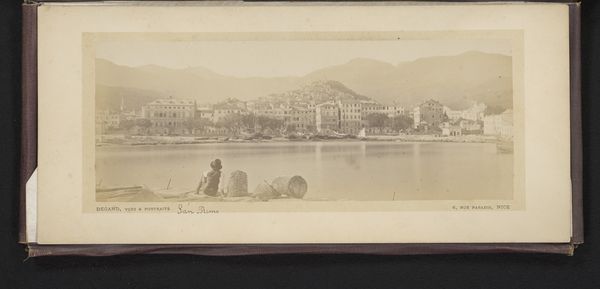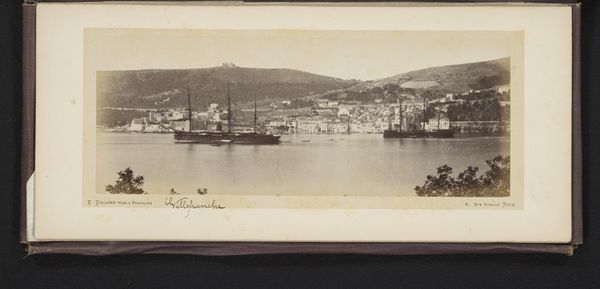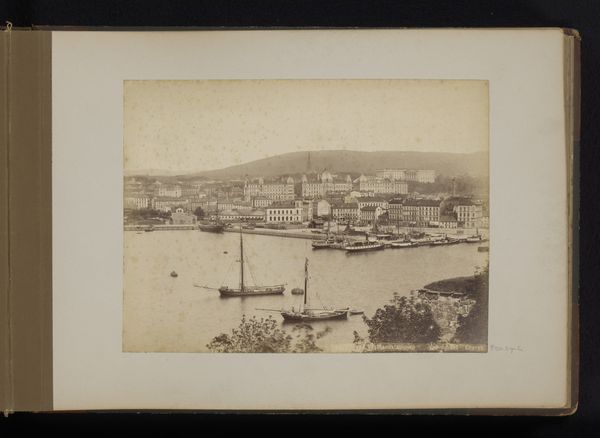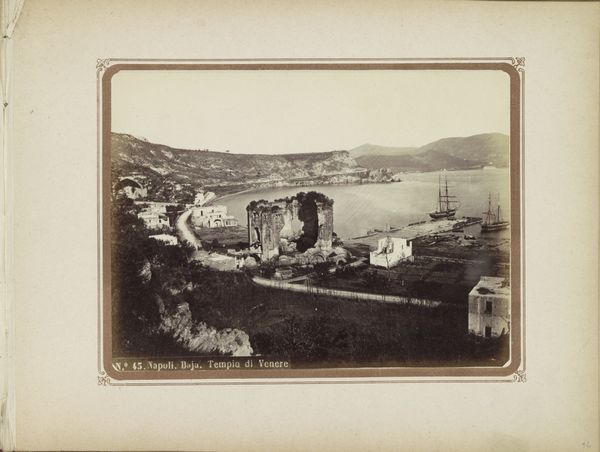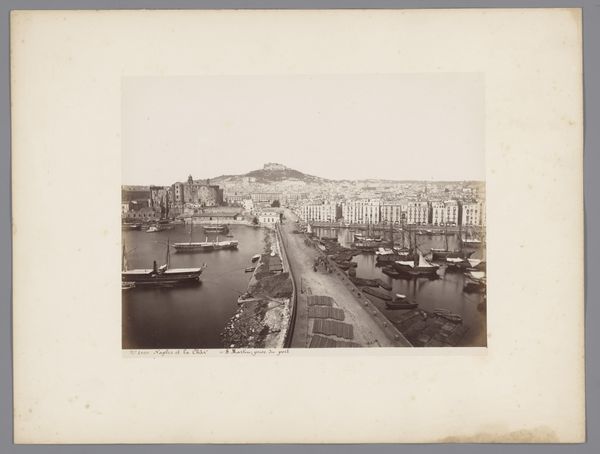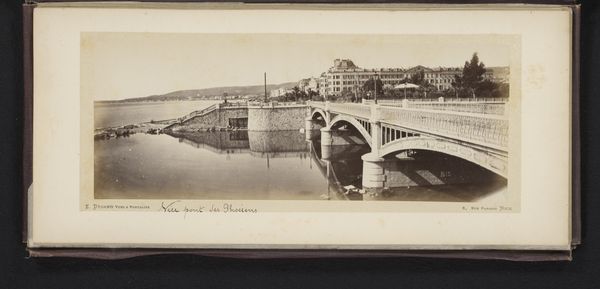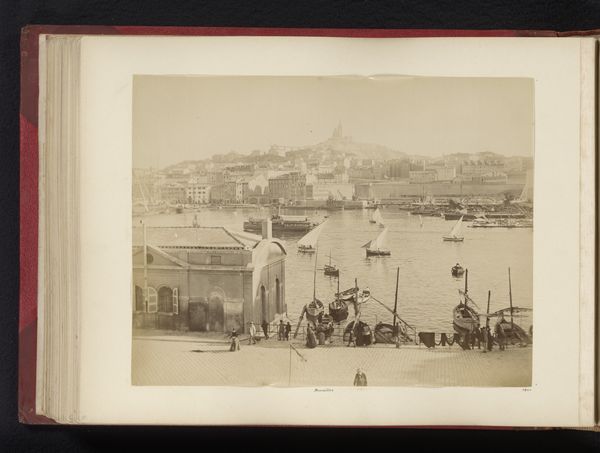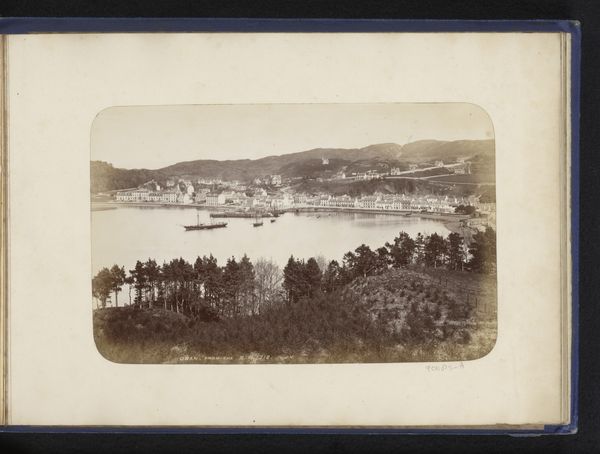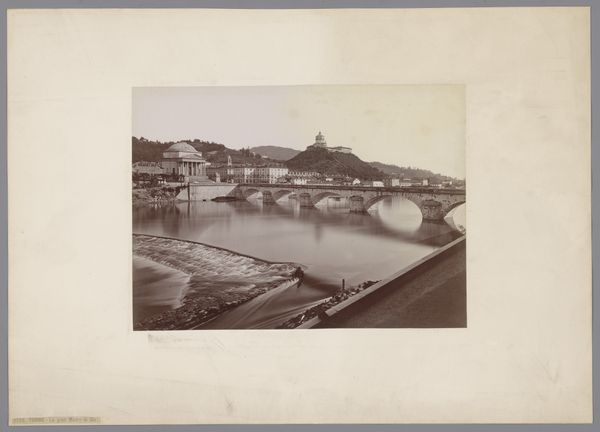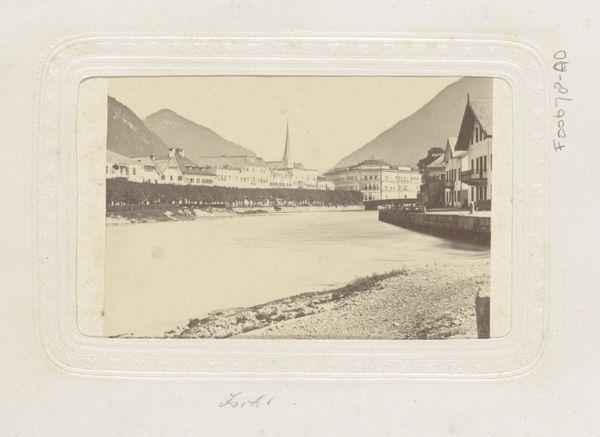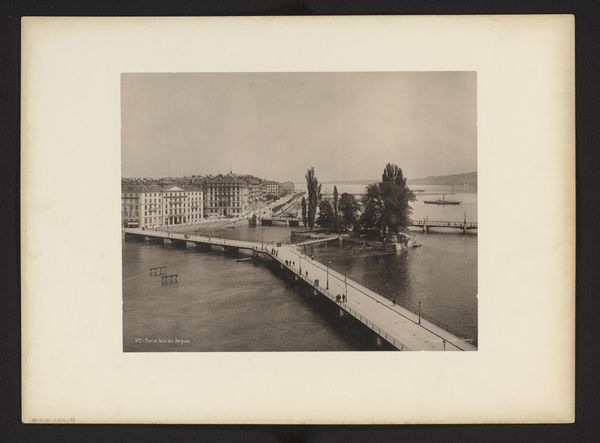
Dimensions: height 222 mm, width 84 mm
Copyright: Rijks Museum: Open Domain
Curator: Looking at this serene albumen print, "Gezicht op de haven van Nice," circa 1872-1874 by Eugène Degand, I am struck by how…still everything feels. Editor: Stillness is definitely the word that comes to mind. The muted tones create this almost melancholic atmosphere. What can you tell me about this particular image? Curator: The print exemplifies a popular visual theme from the era: cityscapes showcasing urban life and maritime activities. Focusing on material aspects, the albumen print process involved coating paper with egg white, rendering impressive detail but requiring substantial labor. Look at the horizon, it appears he skillfully manipulated the chemistry. Editor: Absolutely, but more broadly, Nice in the late 19th century was a haven for European elites—its portrayal here raises questions about whose gaze is centered and whose labor goes unacknowledged. I’m looking at these figures, fishermen maybe, on the pier…do they benefit from or service the society being built in the background? Curator: Well, considering this albumen print likely belonged to someone among those elites, we’re probably viewing it through their lens. And from that, Degand perhaps reveals subtle, often romantic, insights into the culture that also produced this luxury photographic commodity. Editor: It makes me think of access, who got to create and own art—photographic equipment itself was an industrial product largely unavailable to the working class at the time. Did he choose the exact placement of the buildings and mountains in order to emphasize wealth, tourism, imperialism, or did it merely follow the codes of landscape traditions? Curator: These are definitely important questions. But I’m drawn to how Degand, as an artisan photographer, handled the practicalities of his craft amidst the growing mass culture. The work required significant technical skill, shaping how the image reflects the broader cultural norms that dictated who owned cameras, who vacationed in Nice, and who was worthy of documentation. Editor: That's a perspective worth considering—the intertwining of artistry, industrial production, and prevailing social structures of the period. Thanks, Curator, I hadn’t quite considered how labor intensive these practices would have been. Curator: Of course. It highlights the interconnectedness of image-making and the broader society in which the practice takes place.
Comments
No comments
Be the first to comment and join the conversation on the ultimate creative platform.
